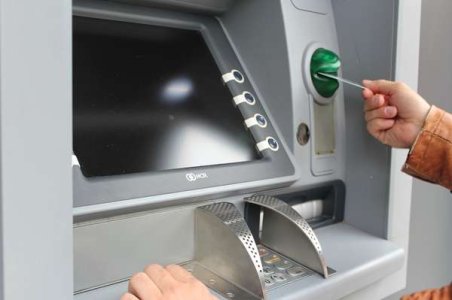Is your ATM safe? Experts reveal why banks selling ATMs could be damaging for Aussies
Remember the good ol' days when visiting the local ATM didn't come with a price tag? When the convenience of cash withdrawal was simply that—a convenience?
Well, brace yourselves. These days, a simple visit to the ATM could leave you lighter in the pocket than you'd expected. And it's not the cash withdrawal we're talking about!
In 2017, a wave of relief washed over us as Australian banks declared they'd be scrapping cash-out fees for using another bank’s ATMs. The ATM landscape had begun to look like a consumer's dream: free and accessible.
Fast forward six years, and the lush landscape of fee-free withdrawals has become somewhat barren.
Nowadays, you are more likely to stumble upon an independent ATM provider showing no mercy with their hefty withdrawal costs.

Associate Professor of Finance at the University of New South Wales, Mark Humphery-Jenner, said that these sly moves benefit banks, reducing their operational costs while simultaneously hitting consumers’ pockets.
'ATMx (owned by Armaguard) is now increasingly replacing ANZ machines. Unless your bank has a fee waiver agreement with ATMx, they will charge you $3 to withdraw your money.' cautioned the professor.
This is no trivial matter. Multiple withdrawals could quickly add up to a substantial loss for fixed-income or lower-income earners with tight budgets.
The professor suggested consumers could evade these fees by withdrawing money in person at bank branches.
But with local branches growing sparse, accessibility is becoming a real issue.
Now you might wonder, 'What other options do we have?' Well, there is still light at the end of the tunnel.
Macquarie Bank and ING are still championing the cause of fee-free withdrawals across all ATMs. Ample reason to consider that switch, perhaps?
With the surge of digital transactions, it seems plausible to question the longevity of ATMs.
Based on data from the Australian Prudential Regulation Authority, the number of ATMs in Australia has decreased by half between 2017 and 2022.

A recent report by the Australian Banking Association reveals that an overwhelming 98.9 per cent of bank interactions in Australia over the past four years were conducted digitally.
As cash transactions and ATM machines continue to decline significantly, Associate Professor Christoph Breidbach from the University of Queensland's Business School predicts that fees for cash withdrawals may continue to rise for individuals who still prefer or require cash transactions.
Breidbach said, ‘It’s expensive for banks to run ATMs. Now we have a Covid and post-Covid society, which has supercharged a cashless society because people were afraid to touch cash. An increase in fees for ATM transactions is the logical consequence because there are fewer and fewer people using them, but the cost (to run them) is the same.’
John Hicks, an Economics Professor at Charles Sturt University, agreed with the notion that it is logical for banks to divest themselves of ATMs as they become less profitable.
Consequently, third-party entities will impose fees since they, too, require revenue generation.
Professor Mark Humphery-Jenner expressed a different perspective, indicating scepticism regarding the imminent disappearance of ATMs.
He said, ‘Banks sometimes claim that ATMs are unnecessary, but this is disingenuous. If cash were so disliked and ATMs so unnecessary, why do third parties think they can make a profit by running ATMs?’

In a nutshell, banks will keep watching their dollars, and we, in turn, need to keep a vigilant eye on ours.
Are you concerned about the decreasing accessibility of fee-free ATMs and the potential financial impact on individuals, especially those with limited budgets? Do you believe that the shift towards a cashless society will lead to the complete disappearance of ATMs? Share your opinions; we’re all ears.
Well, brace yourselves. These days, a simple visit to the ATM could leave you lighter in the pocket than you'd expected. And it's not the cash withdrawal we're talking about!
In 2017, a wave of relief washed over us as Australian banks declared they'd be scrapping cash-out fees for using another bank’s ATMs. The ATM landscape had begun to look like a consumer's dream: free and accessible.
Fast forward six years, and the lush landscape of fee-free withdrawals has become somewhat barren.
Nowadays, you are more likely to stumble upon an independent ATM provider showing no mercy with their hefty withdrawal costs.

There is a growing trend among banks to enter into agreements with third-party entities for their ATMs. Image by Peggy_Marco from pixabay
Associate Professor of Finance at the University of New South Wales, Mark Humphery-Jenner, said that these sly moves benefit banks, reducing their operational costs while simultaneously hitting consumers’ pockets.
'ATMx (owned by Armaguard) is now increasingly replacing ANZ machines. Unless your bank has a fee waiver agreement with ATMx, they will charge you $3 to withdraw your money.' cautioned the professor.
This is no trivial matter. Multiple withdrawals could quickly add up to a substantial loss for fixed-income or lower-income earners with tight budgets.
The professor suggested consumers could evade these fees by withdrawing money in person at bank branches.
But with local branches growing sparse, accessibility is becoming a real issue.
Now you might wonder, 'What other options do we have?' Well, there is still light at the end of the tunnel.
Macquarie Bank and ING are still championing the cause of fee-free withdrawals across all ATMs. Ample reason to consider that switch, perhaps?
With the surge of digital transactions, it seems plausible to question the longevity of ATMs.
Based on data from the Australian Prudential Regulation Authority, the number of ATMs in Australia has decreased by half between 2017 and 2022.

The pace at which ATMs will continue to decline is a subject of ongoing debate. Image by eduschadesoares from unsplash
A recent report by the Australian Banking Association reveals that an overwhelming 98.9 per cent of bank interactions in Australia over the past four years were conducted digitally.
As cash transactions and ATM machines continue to decline significantly, Associate Professor Christoph Breidbach from the University of Queensland's Business School predicts that fees for cash withdrawals may continue to rise for individuals who still prefer or require cash transactions.
Breidbach said, ‘It’s expensive for banks to run ATMs. Now we have a Covid and post-Covid society, which has supercharged a cashless society because people were afraid to touch cash. An increase in fees for ATM transactions is the logical consequence because there are fewer and fewer people using them, but the cost (to run them) is the same.’
John Hicks, an Economics Professor at Charles Sturt University, agreed with the notion that it is logical for banks to divest themselves of ATMs as they become less profitable.
Consequently, third-party entities will impose fees since they, too, require revenue generation.
Professor Mark Humphery-Jenner expressed a different perspective, indicating scepticism regarding the imminent disappearance of ATMs.
He said, ‘Banks sometimes claim that ATMs are unnecessary, but this is disingenuous. If cash were so disliked and ATMs so unnecessary, why do third parties think they can make a profit by running ATMs?’
Key Takeaways
- Banks offloading ATMs to third-party suppliers is having a negative impact on Australians with high withdrawal fees reinstated.
- Some Australian banks have signed agreements with currency management service provider Armaguard, effectively offloading a significant portion of their ATMs.
- The University of New South Wales Associate Professor of Finance, Mark Humphery-Jenner, warned that this trend impacts everyone and particularly harms those who make smaller withdrawals more often.
- Despite the trend of increasing ATM fees, several options are still available for customers seeking to avoid these fees, such as withdrawing at bank branches or switching to banks that waive ATM fees from all machines.
In a nutshell, banks will keep watching their dollars, and we, in turn, need to keep a vigilant eye on ours.
Are you concerned about the decreasing accessibility of fee-free ATMs and the potential financial impact on individuals, especially those with limited budgets? Do you believe that the shift towards a cashless society will lead to the complete disappearance of ATMs? Share your opinions; we’re all ears.





